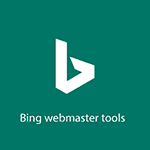Is your website getting the most out of Bing searches?
Most web developers focus almost entirely on Google SEO. But with a higher market share than you’d think, Bing is a search resource you don’t want to miss out on.
Bing SEO differs from Google SEO in subtle but important ways, so you need to make sure you’re planning around it. We’re here to help! Read on for 13 tips for how to get more Bing traffic.
Page Contents
1. Have a Plan for Avoiding Spammy Links
Bing’s ranking system works very much with the notion of quantity. By having more links, you’ll get more authority. Websites linking back your site (and vice versa) confirm to search engines your content is high-quality and your site is trustworthy.
Even so, don’t ignore quality for quantity. Bing asks websites to build links while respecting the Webmaster Guidelines. Using tactics for getting spammy links like link buying, link farming, etc. can prevent Bing from including your website in its index.
When deciding on your Bing link strategy, focus on:
- Using high authority, well-established sites
- Links to sites ending with .gov, .org and .edu have more weight
- Using older domains, as Bing favors older domains
- Emphasize social media links—there is a correlation with higher Bing ratings
- Have a monthly limit of 20 backlinks
- Have keywords as your anchor text
Remember, creating link-worthy content is always the best strategy for link building.
2. Keywords Must Be Relevant

It might seem obvious, but we think it’s important to mention. It’s recommended by Bing themselves that you use relevant keywords and that you carry out quality keyword research for each individual post.
The relevancy of your keywords is key to ranking in any search engine results page, including Bing. This ties into producing high-quality, informative content and building trustworthiness with searchers.
3. Optimize Your Content for Bing
We’re talking about quality here.
The best content will be clean and ad-free. This will give you a higher chance to get indexed and have Bing show your site in relevant search results. Make your content easy to find, and don’t include spammy pop-ups.
Also, practice rigorous focus on blog post length. To get the most out of your chances to rank on Bing, your content should have around 1,600 words of quality information. Keeping content unique and fresh will get more regular hits, so it’s important you have a content plan that follows a regular and thoughtful posting schedule.
4. Tag Your Website

Tags and categories are important for getting your site recognized and indexed, and it doesn’t have to be hard to manage. Systems like WordPress make it easy to manage the categories and tags for your site.
Tags let searchers and Bing algorithms know what your content is and what to expect. Categories and tags improve the experience of the user, allowing them to find what they’re looking for quickly and with ease. It’s also easier for you to keep on top of content management.
5. Focus on Your On-Site SEO
For Bing, on-site SEO should be the priority with a focus on sitemaps and internal links. A site audit tool will make it easier to check for on-site problems. It will list your website’s problems and rank them by priority. These tools can also recommend how to fix any issues that arise.
Using XML Sitemaps and having a good link structure will boost Bing search traffic. You can boost traffic to pages that are underperforming by internally linking from pages that are doing the best. You could see a huge increase in your organic traffic.
And while we’re at it, it’s a general point to make sure your website is optimized to its full potential. You want to make sure your website is performing at its best on all your targeted platforms.
6. Claim and Optimize Your Bing Local Listing

Every online business aims to generate more visitors and more leads on their website and everywhere their brand is available. The more leads, the more chance of conversions. You should be optimizing your local SEO as locals are your most likely clientele.
Make sure you’ve visited Bing Places for Business and claimed ownership of your listing. You’ll either be able to import your business data or you can add it manually.
If you optimize your local content right, it can boost online purchases significantly. The information needs to be available on-site as people decide to whether buy within roughly an hour of their initial search.
People are also browsing on multiple devices now. In SEO terms, this can trigger many benefits if you’re listed on Bing places. One big benefit is that your site will be easier to find because local results are placed higher in the Bing search results.
7. Click-Through Rate
Bing is quite honest about how big a role user signals play in their ranking calculations. They’re open about how effective it is for high rankings, too.
We measure user behavior by ‘pogo-sticking’ (running a search, clicking a result, and pressing back to the results page) and SERP click through. Questions that they ask are:
- If your result is #1, does it get clicked?
- If so, does the user come back almost instantly or within a good time frame?
- Do they press back and click on search result #2?
- What action do they have with #2 and did they seem more satisfied with it?
- Did they click on any other results?
Watching user behavior helps Bing to understand which results are getting more clicks and thus seem more relevant to the user. It also determines if this opinion is followed through with their following actions on the site. The more your site gets clicked on and the less SERP bounceback you have, the better.
8. Increase Social Media Signals for Content

Bing has also been open when it comes to admitting that social media signals play a role in ranking calculation. On Bing, you’re rewarded for getting a lot of endorsement on social media.
You mustn’t be shy in sharing your guides and promoting your blog on your social media channels. You should be aware, though, that Bing doesn’t encourage any ‘shady’ social media tactics that make your followers grow too fast. That means no fake follower generation!
A good rule of thumb to remember is that when it comes to Bing search results (or any search engine really), follower count isn’t going to help. It’s all about the likes and shares, and even a few go a long way.
9. Backlinks
Backlinks are of great importance to ranking well on any search engine, not just Bing. With Google, though, the importance of the number of backlinks has declined. Instead, it’s more about PageRank (the traffic passing through the backlinks).
But with Bing, in most cases, the opposite is true. To add to this, more than half of backlinks that ranked in the top 30 results contained keywords within the anchor text.
While it won’t give you the same ranking boost, you should grow your link profile too. Stick to the rule of avoiding spam and choosing relevant, high-quality sites to link to.
When it comes to anchors and diversity, unfortunately, there isn’t a safe threshold. ‘Over-optimizing’ them will work for Bing, but it might dent your Google ranking. A good rule to follow is to not include your keywords in more than 50% of your backlink anchor texts.
10. Make the Most of Bing Webmaster Tools

If you’re not doing this already, it’s time to set your site up with the webmaster tools. It’s a huge help when it comes to finding what keywords you’re ranking for. It’ll help find and track any spammy links, identify what backlinks you’re indexed for, and so much more.
The best part? The Bing webmaster tool account is free to sign up for! You can also submit your sitemap and sign up for any alerts regarding your site.
It’ll ask you to verify your site by adding an XML file to your site server or copying a meta tag. When it’s done, a dashboard will show up with all the details of how Bing views your site.
There is a suite of diagnostic tools you can make use of too, like Keyword Research and Site Analyzer. If you want, you can stop the Bing Bot from trawling your site at peak hours for your traffic.
11. Produce High-Quality Content
Bing favors sites that have engaging, unique content that actively answers the reader’s needs and questions. According to Bing guidelines, here are 3 ways to tell your content piece is of high quality:
- Authority: can we trust the content provided?
- Utility: Is the piece informative, helpful, and detailed enough?
- Presentation: Is the content easy to locate and presented in an easy to read fashion?
Essentially, Bing desires that you mention the content author and state your information sources. It wants you to address queries in detail and make sure your content is helpful to users.
Your presentation should be easy to read and make clear distinctions between content and ads. You should never place ads before your main content begins.
Bing focuses on the functional usability and aesthetic of your website and favors multimedia content. Bear in mind that while a Flash-based website will be great for Bing, the extra effort might not be worth it as Google isn’t as good at reading Flash content. It sticks to HTML and text.
That doesn’t mean it’s impossible to create a better experience for users, though. Use videos and images throughout your content to add helpful visual aids and tools. Make sure to add alt text to your images, too, as this will generate extra traffic from image searches.
12. A Well-Aged Domain Is a Good Domain

No matter how good the content is, Bing places a higher value on older domains as opposed to new ones. As long as your website is on an old domain that has a good ranking, Bing will favor it.
Don’t be afraid of letting your domain mature—let it age, but make sure it ages well.
Stay on top of security protection from hackers and avoid negative SEO as much as possible. Maintaining a positive reputation is also key. Do these things and you’ll be ok!
13. Grow Your Brand for More Visibility
By now you understand that Bing prefers established brands within its search results. On this search engine, you’ll want to work hard on your brand awareness and reputation. To be honest, this is a great general rule for all aspects of business success.
Some tips to get you started right away to build trust with your users are:
- Be good to your customers, readers, and visitors—respond promptly and helpfully to support issues and email inquiries
- Make sure products, services and content all give value and not ‘fluff’—you should be avoiding pointless, irrelevant filler content
- Encourage users to leave reviews and testimonials—positive feedback is the best proof there is that what you do works, and works well!
Check out my advice on growing your brand for more tips that will help you in this area.
Getting More Bing Traffic Is Easy When You Know How
There you have it! Now you know how to boost your Bing traffic. It doesn’t have to be daunting or scary anymore, and you’re well on the way to making the most out of this search engine to boost your visibility and ranking.
Remembering the subtle differences between Bing and other search engines is key here. Focus on appealing to Bing’s specific ranking requirements, but remember that if you focus too specifically, it might knock ratings on other search engines. Finding the right balance and taking full advantage of the unique tools Bing has to offer will allow you to do this to your full potential.
Want more tips and tricks for boosting your SEO rankings? Check out my blog updates for more.

